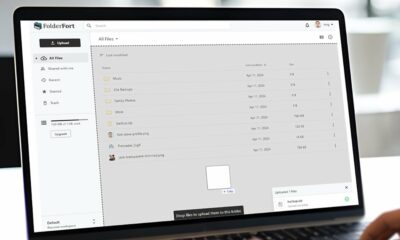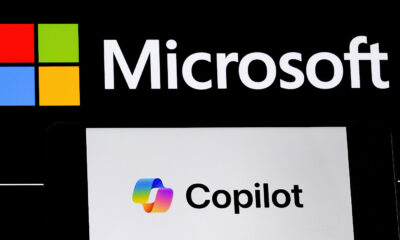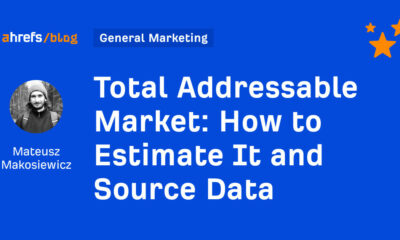Customer data platforms (CDPs) centralize data from customer touchpoints. In B2B buying decision-making is often spread out over many individuals within an organization, marketers can use CDPs used to guide purchasers through the sales funnel.
“A CDP joins disparate systems and improves operational efficiency, providing a centralized location to collect, clean and control customer data,” said Cecilie Burleson, manager at consultancy EY, at The MarTech Conference.
Valuable first-party data in the CDP
First-party data comes to marketers by way of the information customers share and the behaviors they engage in through an organization’s digital touchpoints. All the data gets centralized in the CDP. This includes customer attributes and preferences, their behaviors, as well as other digital activities and events.
Without a CDP, the data is split across various data warehouses, data lakes, a CRM, or in separate departments like sales, marketing or legal.
“While first-party data is more limited in volume, it’s going to be of increasing value over time as regulations continue to get more strict and third-party cookies go away,” said Joel Wright, EY’s senior manager, technology consulting – digital, analytics and marketing technology.
Read next: What is a customer data platform?
Zeroing in on customer preferences from unified first-party data
When the data is unified in customer profiles, a better picture emerges. Marketers can act on this data by making engagement more personalized and efficient. It also provides a better alternative to the costly and tedious process of stitching together data from outside third-party sources.
“Knowing explicitly what a customer wants to see based on their preferences and interests really leaves the guessing or reliance on inefficient third-party stitching behind,” said Burleson.
Consolidating sales data into the unified CDP helps marketing teams see what actions drive those sales.
“This will help you to optimize to see what drives more leads and then also how leads really can contribute. Having that seamless cross-channel activation and optimization truly [helps marketing teams understand] how you can orchestrate the customer journey,” Burleson said.
“Having more confidence in what campaigns are working, and more visibility into that data, can build more efficiency in marketing budgeting and minimizing waste,” said Wright.
Connecting B2B buying teams in the CDP
The centralizing muscle power of CDPs also brings order to complicated B2B buying.
“From a B2B standpoint, how do the individuals in an organization play a unique role?” asked Burleson. “Not just one person is likely going to be key to the interactions within an organization. It’s often a collection of different team members and each team member from that organization that you’re targeting.”
“Different team members in different parts of the organization will be going to your website to research very specific offerings that matter most to them individually,” said Wright. “One person could be researching the benefits of an offering. Another might be doing a price comparison. And another person might be looking into integrations and features.”
Looking at each of these interactions in isolation only gives the marketer a partial look at a larger picture.
“When you place all the profiles together at an account level, you start to get a clearer view of the various individuals, but also how the company itself is engaging,” Wright explained.
Knowing how individuals fit within the organization at the account level helps marketers choose the most efficient way to move customers through the funnel.
Gathering more first-party data through B2B engagement
Further engagement creates more data and intelligence to help move B2B prospects through your funnel. That data can also be analyzed for insights on the next best action to take. It can also help segment customers to make marketing campaigns more efficient.
But why would customers hand over that information? There has to be a value exchange.
“Think about what would entice you to provide your contact information to a company,” said Wright.
A cash giveaway or contest might seem too gimmicky in a B2B context, he suggested. Instead, the foundation of a long term business relationship is built with relevant, helpful communication. A prospect might sign up for tips about their industry, for instance.
Relevance establishes trust with the customer because it shows that you, as the marketer, are aware of business challenges that they face.
Read next: 3 challenges to building customer trust
Often when customers encounter forms to fill out, they will abandon the exercise if they’re giving out too much info. Therefore, it’s best to establish the minimum amount of data your organization needs in order to act intelligently on the data you gather.
“Considering that you likely won’t need much else to continue the dialogue, maybe you only need the name and the email address,” said Wright. “And you should still limit the number of data fields to get the essentials and increase conversion on the form completion.”
Building more first-party data through testing
There’s often a risk in alienating customers by asking for more first-party data. In addition to keeping the ask to a minimum, marketers should also test and optimize their collecting practices.
“It shouldn’t just be throwing something up there and leaving it,” said Burleson. “You want to have a framework in place to collect data and continuously improve.”
First, assess the data that you have available already. Then, brainstorm more ideas about what new methods could be tested.
Instead of filling out forms, maybe there are business-specific offers that could entice customers to share more data.
“As you’re testing, what are the success criteria that you’re testing against?” Burleson asked.
Also make sure to leave time to evaluate the test, and then keep testing to further improve your process of engaging customers and becoming more intelligent in your messages to them.
“You’re always refining, and things are always going to change along the way,” said Burleson.
Get the daily newsletter digital marketers rely on.



















You must be logged in to post a comment Login